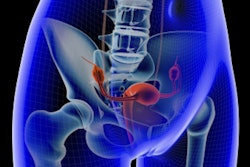Fewer women are getting traditional abdominal hysterectomies to deal with pelvic pain and fibroids, opting instead for less-invasive approaches such as embolization therapy, endometrial ablation, and laparoscopy, according to research published online December 26 in the American Journal of Obstetrics & Gynecology.
A team led by Dr. Daniel Morgan of the University of Michigan found that hysterectomies in the U.S. decreased 12% between 2010 and 2013, from nearly 40 hysterectomies per 10,000 women to 35. The group also found that laparoscopy, a less-invasive method for removing the uterus, was the most common surgical approach for hysterectomy over the same time period, increasing from 26% in 2010 to 43% in 2013.
Over the study time frame, there was a shift from inpatient to outpatient surgery: In 2010, the inpatient rate of hysterectomy was 26.6 per 10,000 women and the outpatient rate was 13 per 10,000 women; in 2013, the inpatient rate was 15.4 per 10,000 women and the outpatient rate was 19.6 per 10,000 women.
This shift translated into lower healthcare costs: Total payments for hysterectomy decreased 6.3%, from $823.4 million to $771.3 million.
"The fact that we are seeing lower rates of hysterectomy overall suggests that symptoms and pain are being managed more effectively with alternatives that have fewer risks than open surgery," Morgan said in a statement from the university. "We have a bigger toolbox now to help manage premenopausal symptoms that typically lead to a hysterectomy. For many patients, these options may provide enough relief to avoid surgery."



















